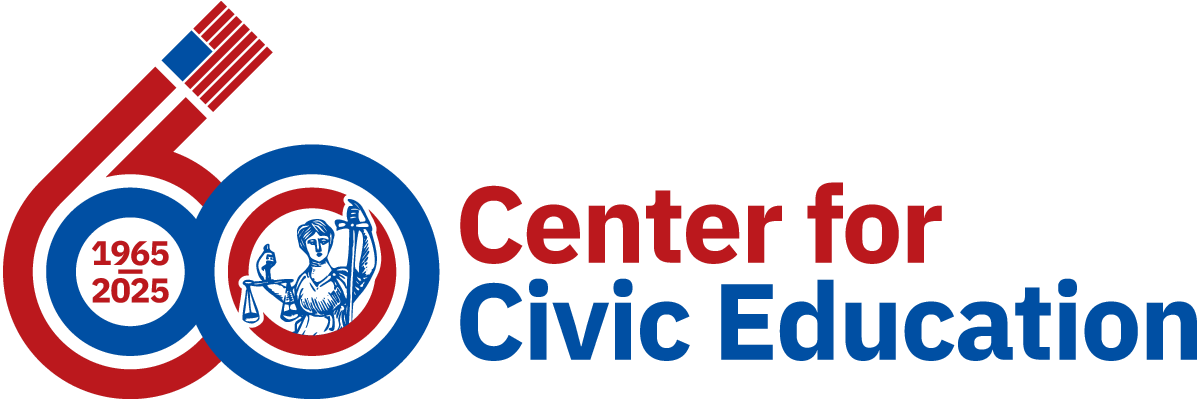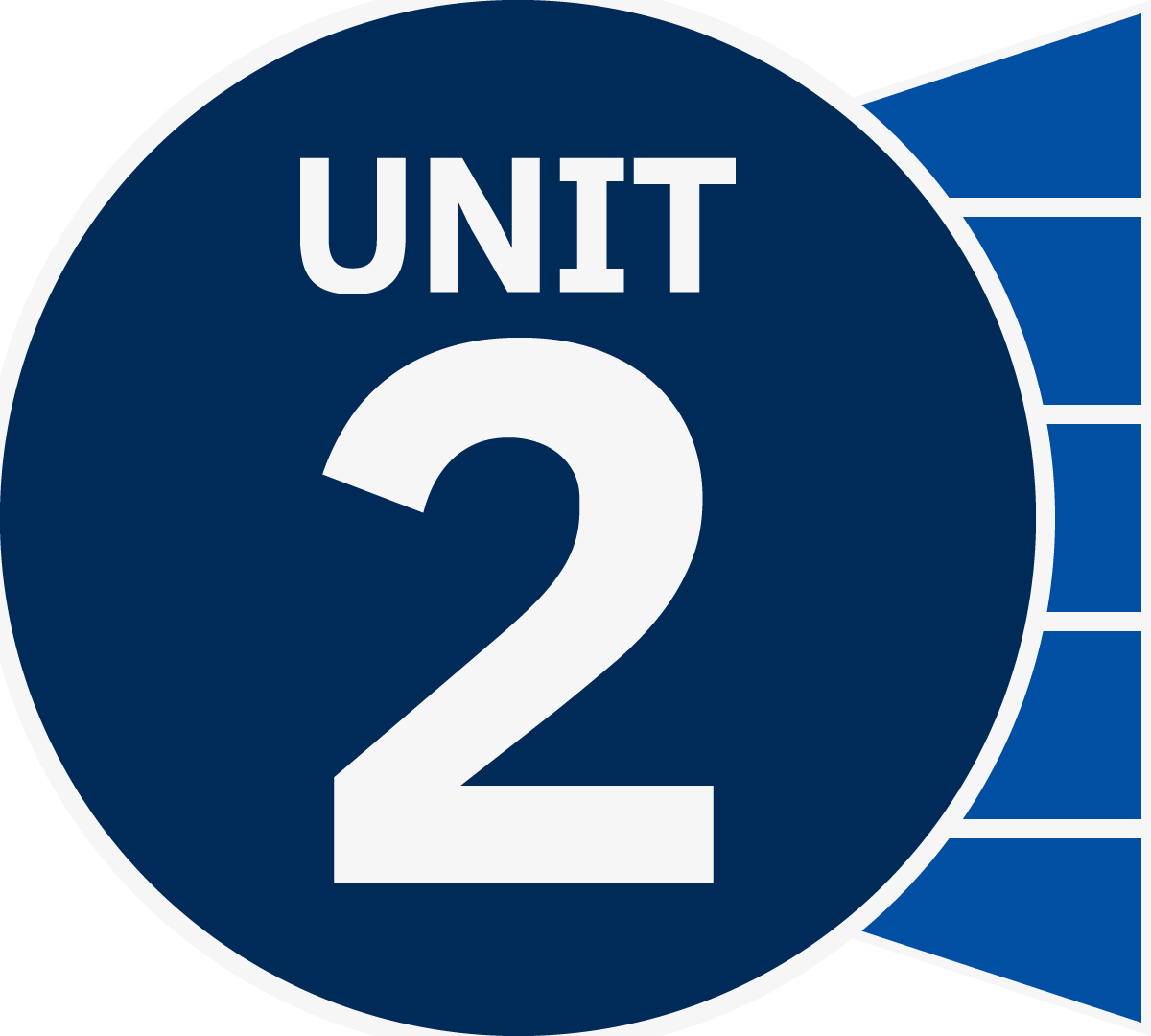Inquiry Companion: Unit 2
In Unit 2 of the We the People: The Citizen & the Constitution textbook, students track how the weakness of the Articles of Confederation ultimately led the Framers to draft the Constitution. Students are introduced to the arguments for and against ratification by the Federalists and Anti-Federalists.
How is the Inquiry Companion Structured?
Unit 2 challenges students to investigate the foundations of federalism. Our Inquiry Companion Guide activities for Unit 2 facilitate student participation in inquiry-based civics learning for each strategy:
Students engage by discussing the position of the convention delegates and explore the difficult history behind the Three-Fifths Compromise. They will explain the historical roots and modern-day complications of the Electoral College. Students then elaborate on the need for compromise in government via a simulation activity. Finally, students will evaluate their new knowledge of the rule of law by crafting their own classroom norms.
Best practices for culturally responsive teaching weave through each activity.
Inquiry Guide Activity
Students demonstrate and evaluate new civic learning through real-world informed engagement opportunities.
In this lesson, students will evaluate the rules the delegates made for conducting the Constitutional Convention and how they guided their work and decisions. Students will then draft their own rules for conducting civil discourses and making the decisions of a modern-day governing body.
Utilize this Evaluate strategy activity in order to enhance students’ understanding of the We the People: The Citizen & the Constitution textbook for Level 3, Unit 2, Lesson 9, or Level 2, Unit 3, Lesson 12.
We the People: The Citizen & the Constitution (Level 3)
- Unit 2, Lesson 9: How Was the Philadelphia Convention Organized?
- Unit 3, Lesson 12: Who Attended the Philadelphia Convention? How Was It Organized?
- Active learning
- Attentiveness to political matters
- Collaboration
- Critical thinking
- Listening
- Writing
- Evaluate the rules that the Constitutional Convention delegates established for civil discourse and decision-making
- Create and defend your own rules for civil discourse and decision-making that should guide the work of a governing body
- What factors into a civil conversation?
- The Constitutional Convention as a Model of Civil Discourse (Video)
- Convention Rules
- Sticky notes
- Highlighters or colored pencils (red, yellow, and green)
- Secrecy at the Philadelphia Convention (Video)
- You Make the Rules
- Exit Ticket
- We the People: The Citizen & the Constitution textbook
- civil discourse A reasoned discussion in which every member has the opportunity to speak on any question, in which no individual’s voice can drown out the ideas of others, and in which listening matters as much as speaking.
- delegate Person chosen to act for or represent others who is entrusted to represent their interests.
The 55 people who attended the Constitutional Convention in Philadelphia were all men, and men who might best be described as part of the governing class, meaning that they had previously held government roles prior to attending the convention. The delegates were appointed by their state legislatures to represent their state’s interests. The number of delegates sent from each state was different, but that didn’t matter much because each state had just one vote, just like Congress under the Articles of Confederation. The age of delegates ranged from 26 to 81 years old. Some were quite wealthy; many were not, but all of them brought various talents, prior experience, and interests. Scholars estimate that between 17 to 25 of the 55 delegates were enslavers. Some of the attendees were the leaders and superstars of their time, including George Washington, Benjamin Franklin, James Madison, and Alexander Hamilton, just to name a few. There were no women, people of color, indigenous people, or delegates one might consider poor or working class.
After electing a convention president (George Washington), the delegates set up rules for their work. These rules included the following:
- The need for at least 7 of the 13 states to be present before doing any business.
- Delegates had to have permission to be absent.
- When someone rose to speak, they needed to address the president, and no one in attendance could be passing notes or reading something else instead of listening.
- A member was not allowed to speak more than twice on the same topic or question and could only speak a second time after everyone else had a chance to speak.
- Special committees were formed to tackle challenging topics.
- Any decision was subject to reconsideration and change.
- And finally, the convention’s work was to remain secret. No delegate could disclose the substance of the debates, though they could take thorough notes.
Some of these rules were criticized heavily, especially the rule of secrecy. Some even wanted to reject the Constitution based on the secrecy rule alone. All the Framers knew that the rules by which they conducted their work would impact the outcome of the Constitutional Convention and the new nation’s perception of it.
Additional resources for teacher background include the following:
Teachers should preview all student materials and resources prior to the lesson.
Part 1
- Welcome students to social studies.
- Introduce the inquiry question: “What factors into a civil conversation?”
- Allow students time to make a prediction about the inquiry question as well as offer their own supporting questions.
- Tell the students that in order to get to the root of this question, they must evaluate one of the most notable examples of civil discourse and decision-making in history: the 1787 Constitutional Convention held in Philadelphia.
- To refresh student knowledge of the Constitutional Convention, play The Constitutional Convention as a Model of Civil Discourse.
- As students watch, they should listen for examples of the rules the delegates established.
- Play the video a second time to ensure comprehension, if needed.
- Allow time for a brief discussion or opportunity for students’ questions.
- Tell students they will now evaluate the rules that Constitutional Convention delegates made for themselves. Remind students that it is these men that went on to be considered the Framers of the Constitution.
- Provide each student with a sticky note and ask them, “What are some common problems that hurt civil discussions and the ability to make decisions?” Designate a place to post sticky notes and share out a few responses.
- Explain that the Constitutional Convention delegates were also concerned about obstacles to decision-making and ensuring civil conversations, so they established a set of convention rules.
- Using your normal routine for establishing groups, divide students into groups of three to five members.
- Distribute Convention Rules and review as a class to ensure students understand the expectations.
- Review the Annotation Station to ensure students understand how to annotate the Convention Rules. Consider modeling one rule if needed. Annotation Station guidelines include the following:
- Highlight in YELLOW phrases that confuse you. Use context clues to try and figure out their meaning.
- Highlight in RED rules with which you do not agree.
- Highlight in GREEN rules with which you do agree.
- ✩ Star the rule that you find most important.
- Working as a team, students will annotate the Convention Rules and discuss which rules were helpful and which rules may have been controversial.
- Circulate around the room, encouraging each group, observing progress, and redirecting as needed.
- Return to a full-class format and allow for a brief followup conversation, drawing attention to the rule of secrecy.
- Play Secrecy at the Philadelphia Convention.
- As students watch, they should listen for reasons why the Framers established a rule of secrecy.
- Play the video a second time to ensure comprehension, if needed.
- Allow time for a brief discussion or opportunity for students’ questions. Consider polling the class to see how many students support the idea of a rule of secrecy.
Part 2
- Return to the breakout group format.
- Tell students that as convention rules scholars, they have been called upon to create their own rules for guiding civil discourse and decision-making for the local school board.
- Distribute You Make the Rules and review as a class to ensure students understand the expectations.
- Students will work in teams to craft five rules they feel are most necessary to ensure there is civil discourse and effective decision-making taking place on their school board. Note that students can refer to the Convention Rules but should not be constrained by them.
- Remind students that all members of the group must be in agreement about the rules established.
- Circulate around the room, encouraging each group, observing progress, and redirecting as needed.
- Provide an opportunity for groups to share their rules with each other and allow for civil discourse.
Extension
Student-produced rules could be presented to the school’s student council/student government or student clubs as suggestions, illustrating effective ways to foster civil discourse and decision-making in a governing body.
Students will demonstrate mastery of the rules for civil discourse by evaluating the rules of the delegates for the Constitutional Convention and completing the Unit 2 Evaluate: Exit Ticket to answer the inquiry question: What factors into a civil conversation?
Students can compare and contrast the Rules for the Constitutional Convention for New Columbia, which addresses the statehood issue for the District of Columbia and presents rules that are similar to the rules for the Constitutional Convention of 1787.













